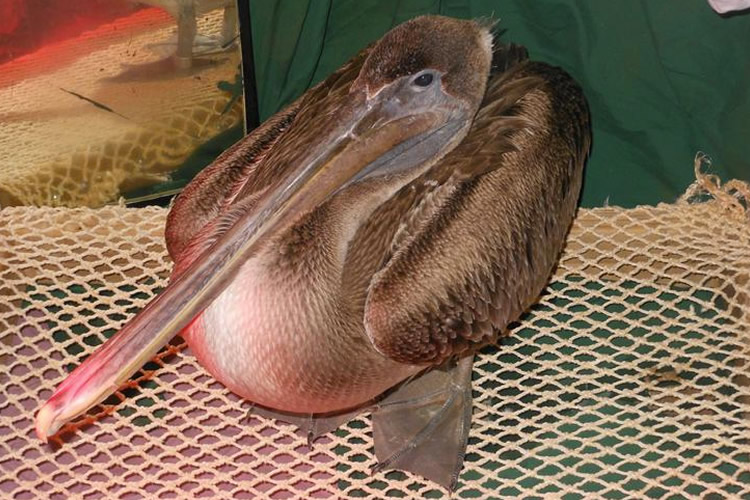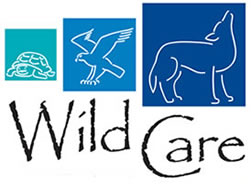
Rare Birds blown to Cape Shores by Hurricane Sandy
PROVINCETOWN – It’s been a busy week for the bird doctors at Wild Care, the Outer Cape’s wildlife rehabilitation clinic, where a number of new patients are being treated for injuries sustained as a result of Hurricane Sandy.
On Saturday, Wild Care director Stephanie Ellis and volunteer Josh Drew retrieved a young brown pelican from the beach at Sheep’s Pond in Brewster. The pelican was placed in a crib in a corner of the wildlife hospital, warmed with a heat lamp and given medicine to treat respiratory problems. Volunteers have been feeding him mackerel and herring to fatten him up.
A denizen of southern latitudes and a rarity on the Cape, the big-billed seabird was reportedly “begging for handouts” from local fishermen before he was rescued, Ellis said. It’s suspected that he was blown off-course during last week’s storm. “He is doing OK. He is brighter, perkier than he was before. And he is eating like a pelican should,” Ellis said on Monday. But she added that his condition remains critical.
The bird was due for an X-ray on Monday afternoon at Eastham Veterinary Clinic to determine if he had any broken bones or internal injuries.
Wild Care is also treating a young northern gannet found on a local beach. Gannets are diving seabirds that seldom stray over land.
“I think we’re seeing immature birds that were blown off course and weren’t able to feed efficiently. For the adults, feeding is old-school,” Ellis said. To cheer him up, the juvenile gannet — all brown feathers, not yet sporting the striking white-and-black plumage of his parents — was placed temporarily in the company of an adult gannet already being treated at the clinic for a suspected seal bite.
Ellis said the influx of injured wildlife happened gradually after the hurricane-turned-tropical-storm blew through. The day after the storm was remarkably quiet at the clinic, with four baby white-footed deer mice the first to be admitted for care. It wasn’t until the end of the week that storm casualties began to trickle in. “We’ve also received five common eiders and an American coot,” Ellis said.
They were bracing for more, as weather forecasters began warning of a nor’easter set to arrive on Wednesday, Nov. 7. Other vagrant birds that appeared in Sandy’s aftermath were able to pick themselves up and fly on. Mass. Audubon reported that a northern lapwing, a striking species of European plover, was seen on First Encounter Beach in Eastham on Oct. 30 before it flew to the east. A flock of 10 storm-blown cattle egrets was also observed on Oct. 30 at Eastham’s Boat Meadow creek. Brown pelicans like the one at Wild Care were sighted post-Sandy from Nantucket, Martha’s Vineyard and Provincetown, Ellis said.
“This, I think, has been unprecedented in the Outer Cape area,” she said.
Wild Night Out Online Auction
READY, SET, BID… We are so excited to announce that our Wild Night Out Online Auction is now live!
READ ALL NEWS
CALENDAR OF EVENTS
04 April, 2024
Wild Night Out Online Auction
EVENT DETAILS
05 April, 2024
Wild Night Out
EVENT DETAILS
28 February, 2024
Wildlife Winter/Spring Talk Series
EVENT DETAILS

DID YOU KNOW??
Wild Care has a state-of-the-art seabird therapy pool, which allows seabirds and waterfowl to exercise on running water. This will help our bird friends recover more quickly so they can get back to their watery habitats!

